A Peek into Thailand’s Hottest Star’s World: 10 Facts You Should Know About Freen
Get an exclusive peek into the world of Freen Sarocha: uncover 10 facts ...
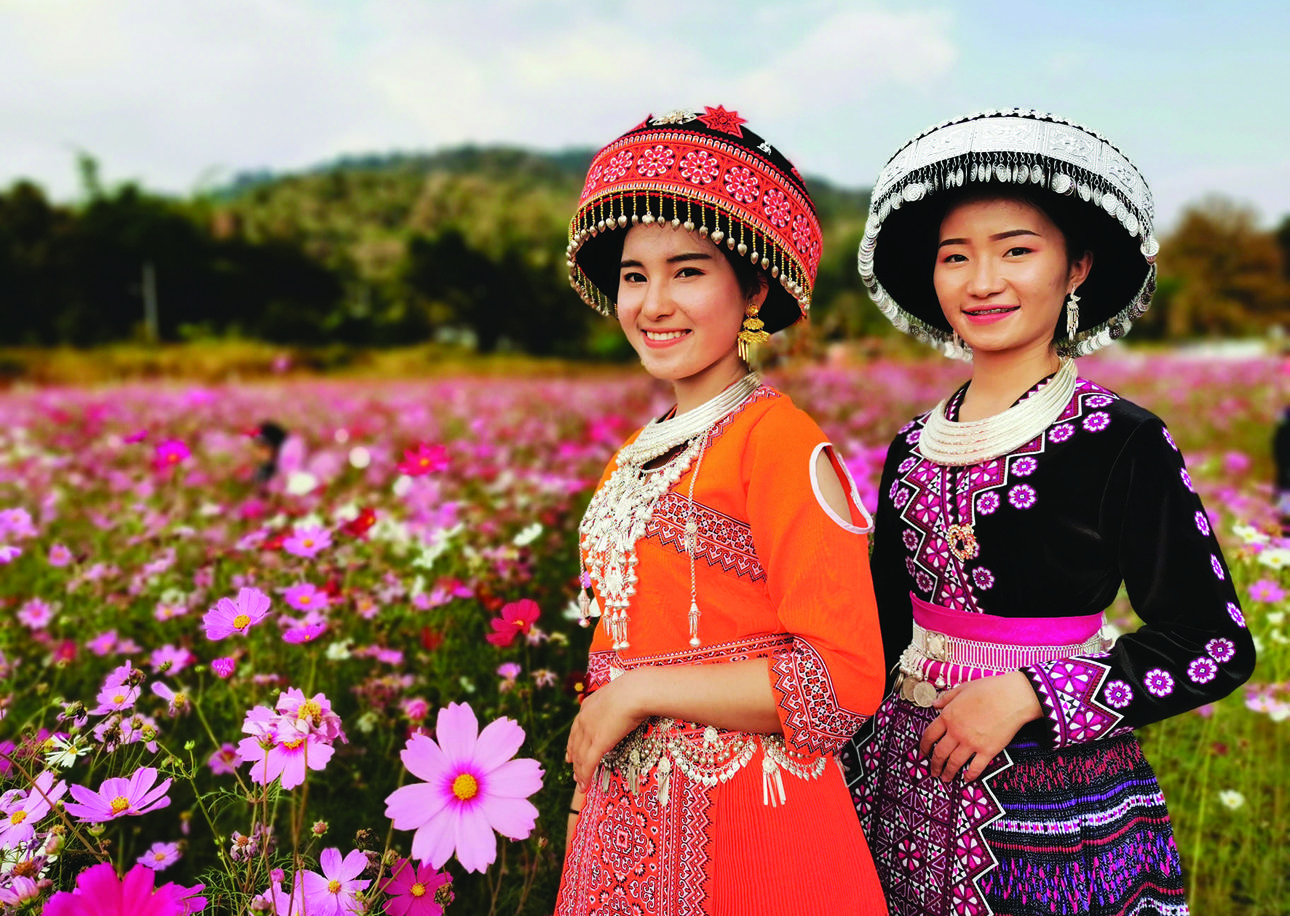
In a fog-shrouded valley surrounded by lush mountains, the Hmong highlanders in Tak province’s Phop Phra district celebrate their New Year in a grand style. “Our New Year festival is the most important event in the Hmong calendar,” a hill tribe member shared with me. “The New Year comes after the harvest season is over. It’s a time for us to rest, have fun, and celebrate with our extended families, relatives, and friends.”
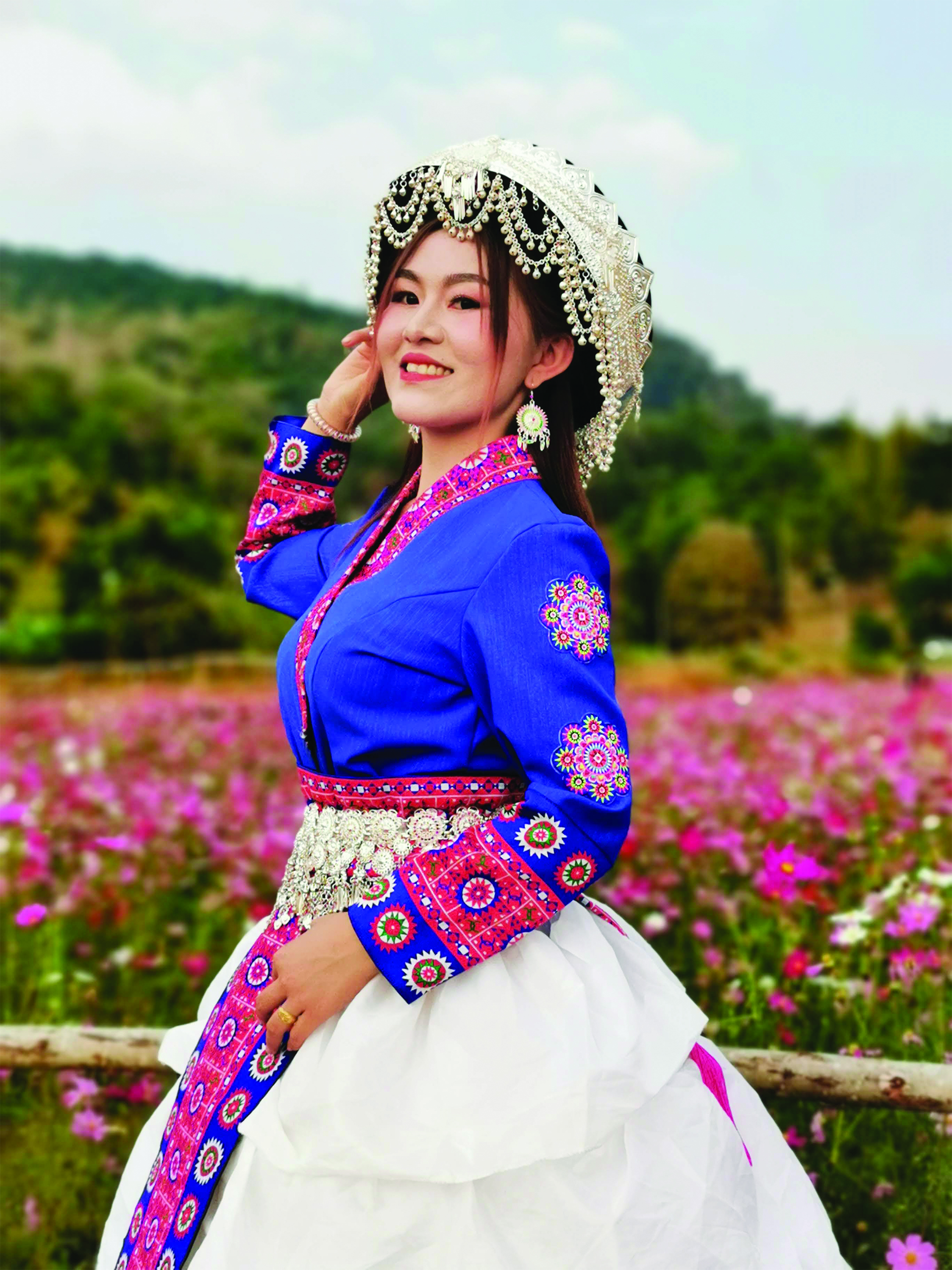
The young generation Hmong highlanders show off their traditional costumes with a contemporary twist
The festival begins on the first day of the rising moon, of the first month of the Hmong lunar calendar. In layman’s terms: typically towards the end of December, on an odd-numbered day. The cool yet sunny days make for the perfect climate for outdoor gatherings and celebrations. How long it is to last is up to the community, their capacity, and how grand they want it to be. The 2022 New Year festival in Phop Phra drew thousands of people every single day for a full week, from December 23 to December 29.
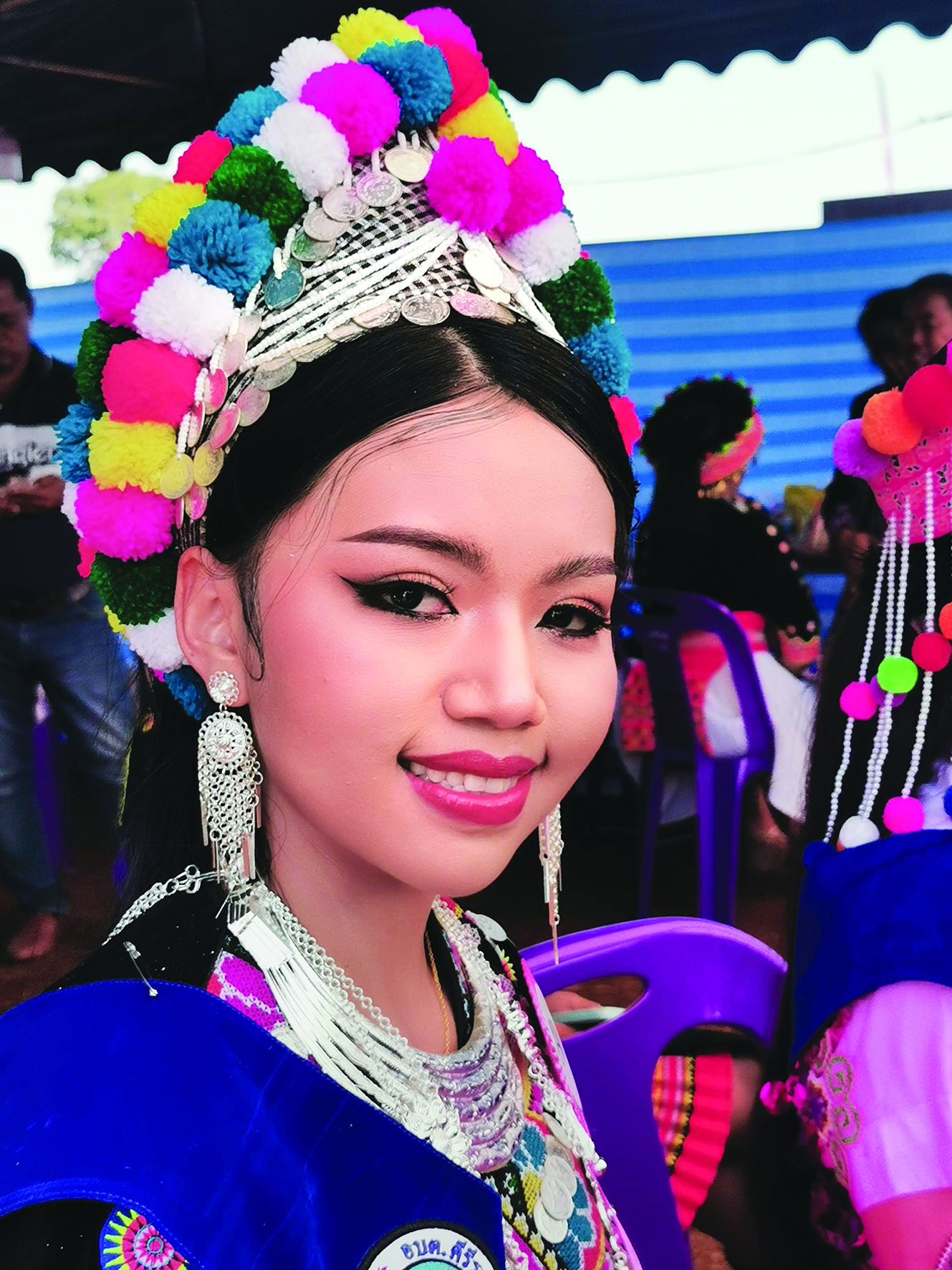
Vivacious make up completes the total look
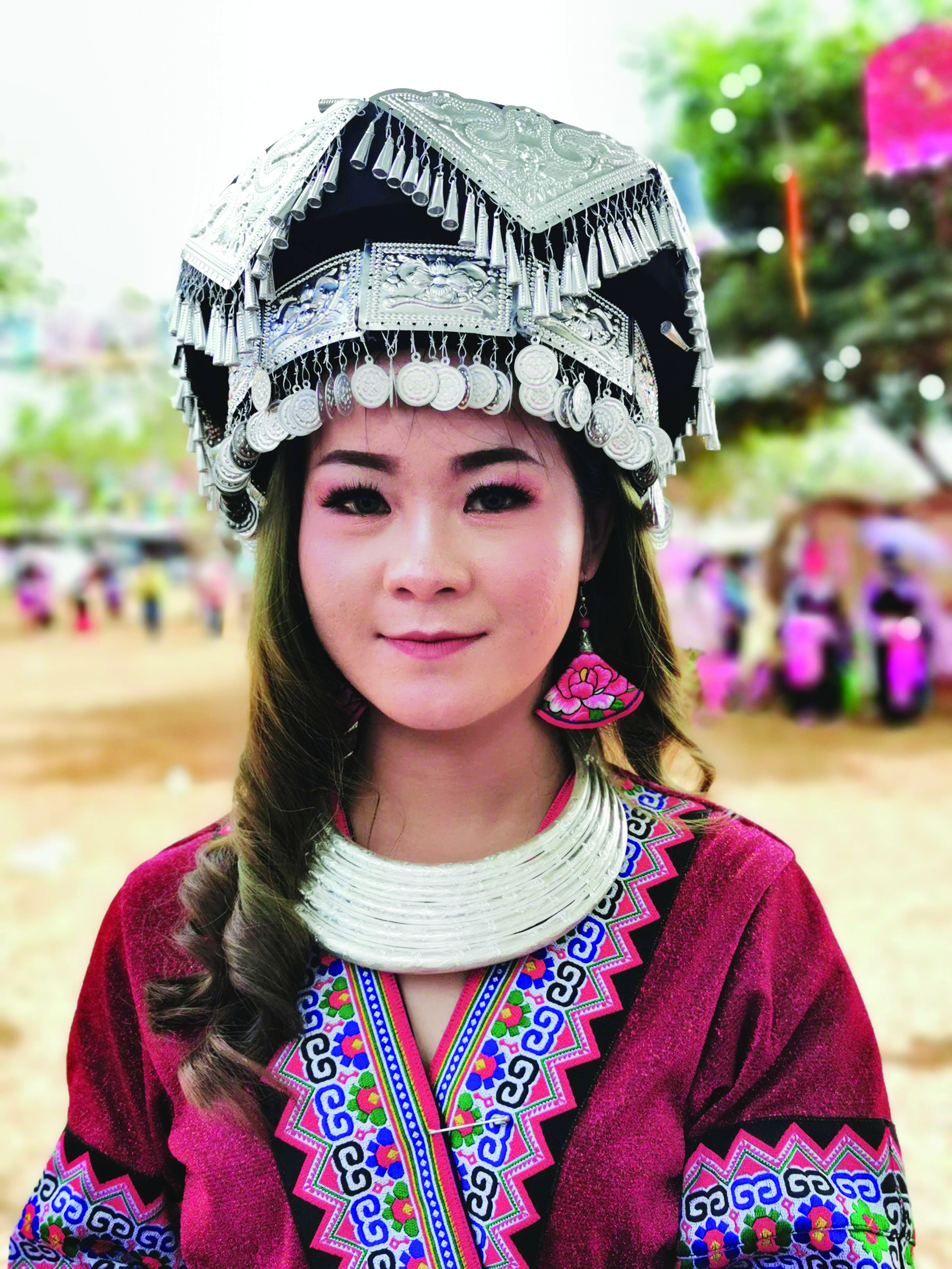
As the largest and most well-known Hmong New Year festival in Thailand, it draws tribe members from not just all over the country, but from abroad as well, who come to partake in the festivities and socialise with other Hmong for days on end. “We usually dress in our best traditional attire for this biggest social event of the year. Due to the Covid-19 pandemic, we did not celebrate for three years, so it will be bigger than ever this year,” my new friend informed me. “Come see for yourself,” and so we did. We arrived on the second day of the festival. As we approached Lake Island, a public park in Tambon Khirirat where the festival was held, we saw parked cars and crowds of people walking along the roadside for kilometres. Due to limited parking at the festival venue, festival-goers had to park their cars and walk to the event. They were all dressed in vibrant traditional garbs, creating a colourful sight. We knew right away that we were in for an extraordinary experience.
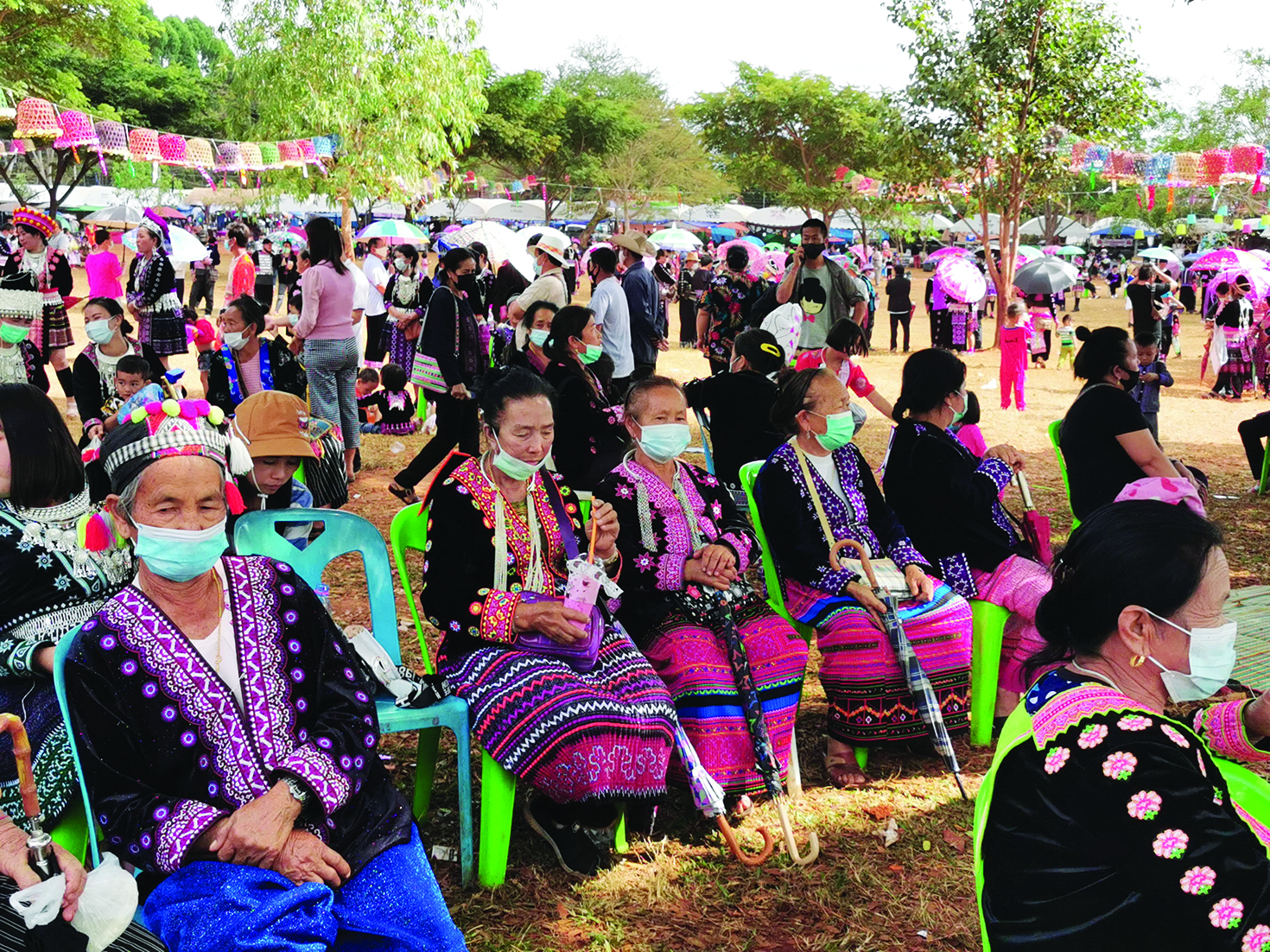
The older generation appear in their traditional garb.
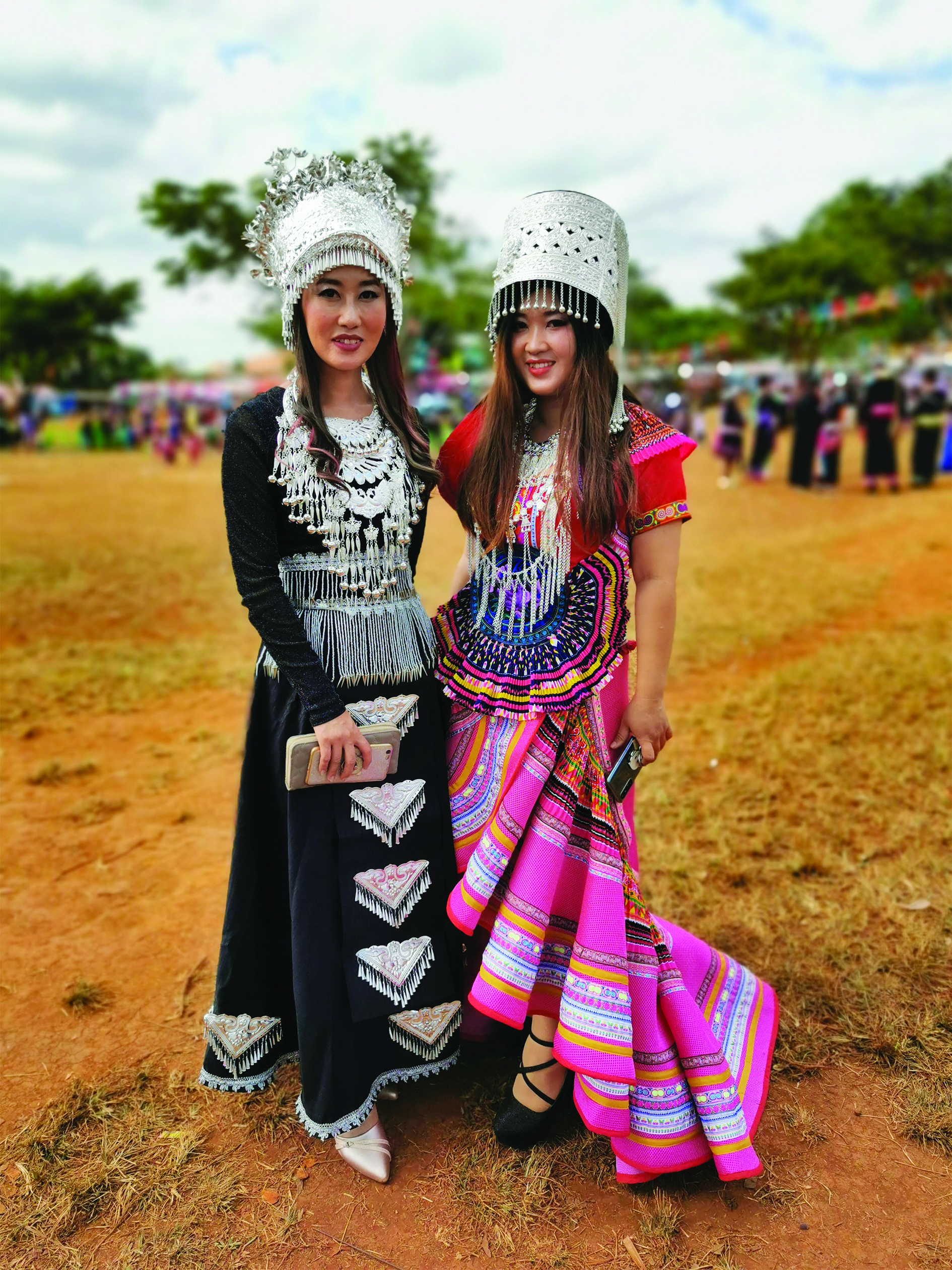
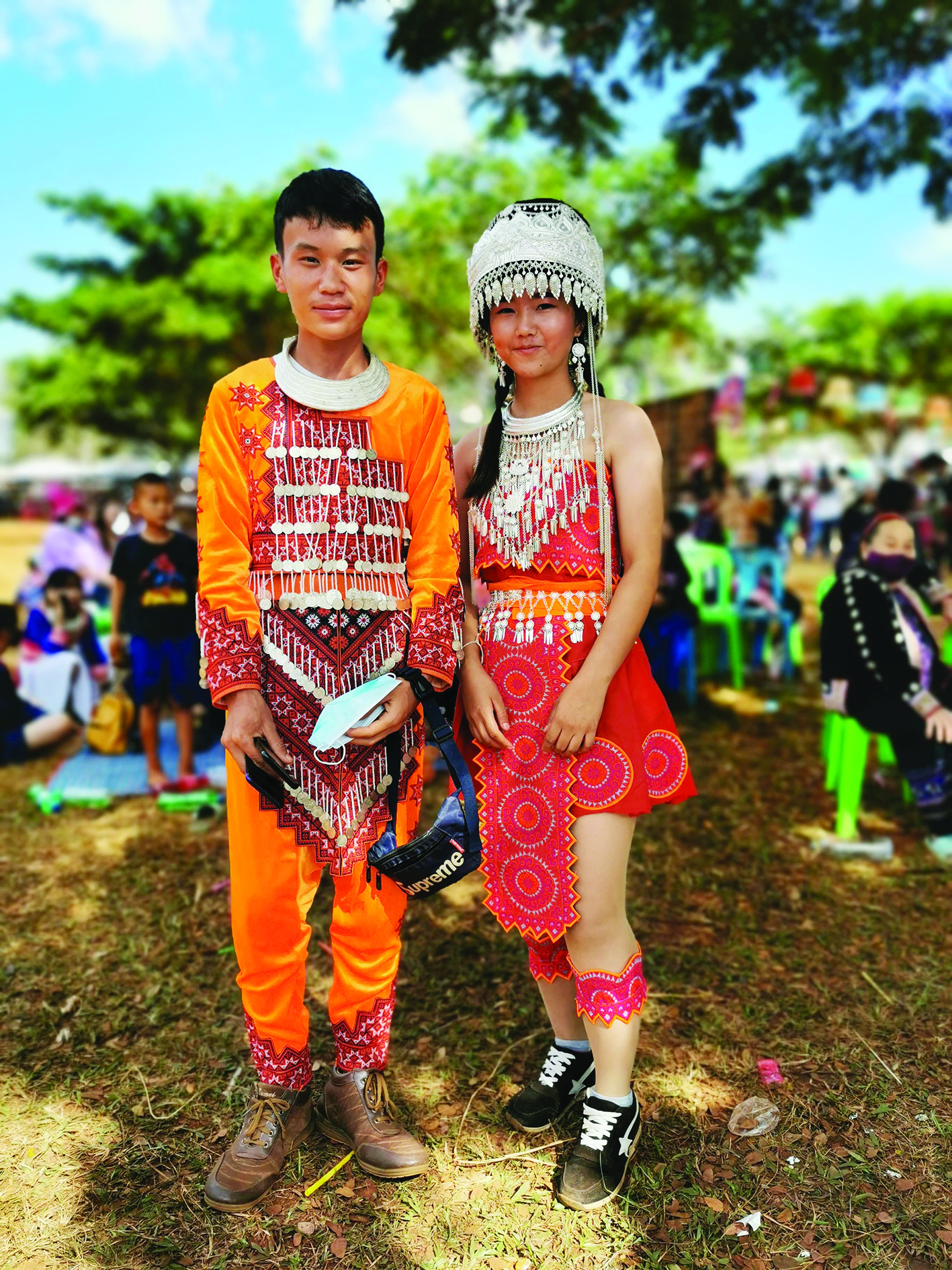
As we approached the Hmong New Year Festival, the air was electric with excitement and joy. Generations of family groups were streaming in. The sight of grandchildren holding the hands of their grandparents, who guided them gingerly toward the festival grounds, warmed our hearts. There were also young couples and flocks of teenagers who provided a visual feast in their striking Hmong attire. While the older generations stuck to traditional garbs made from hemp, the younger generations pushed the boundaries of tradition, reimagining Hmong costumes with a contemporary twist, almost in competition with each other. Flaunting their fashion sense, numerous groups of girls wafted through the festival grounds like fairy-tale princesses wearing long, flowy dresses with full skirts and adorned with Hmong silver jewellery and elaborate headpieces in a variety of patterns and colours.
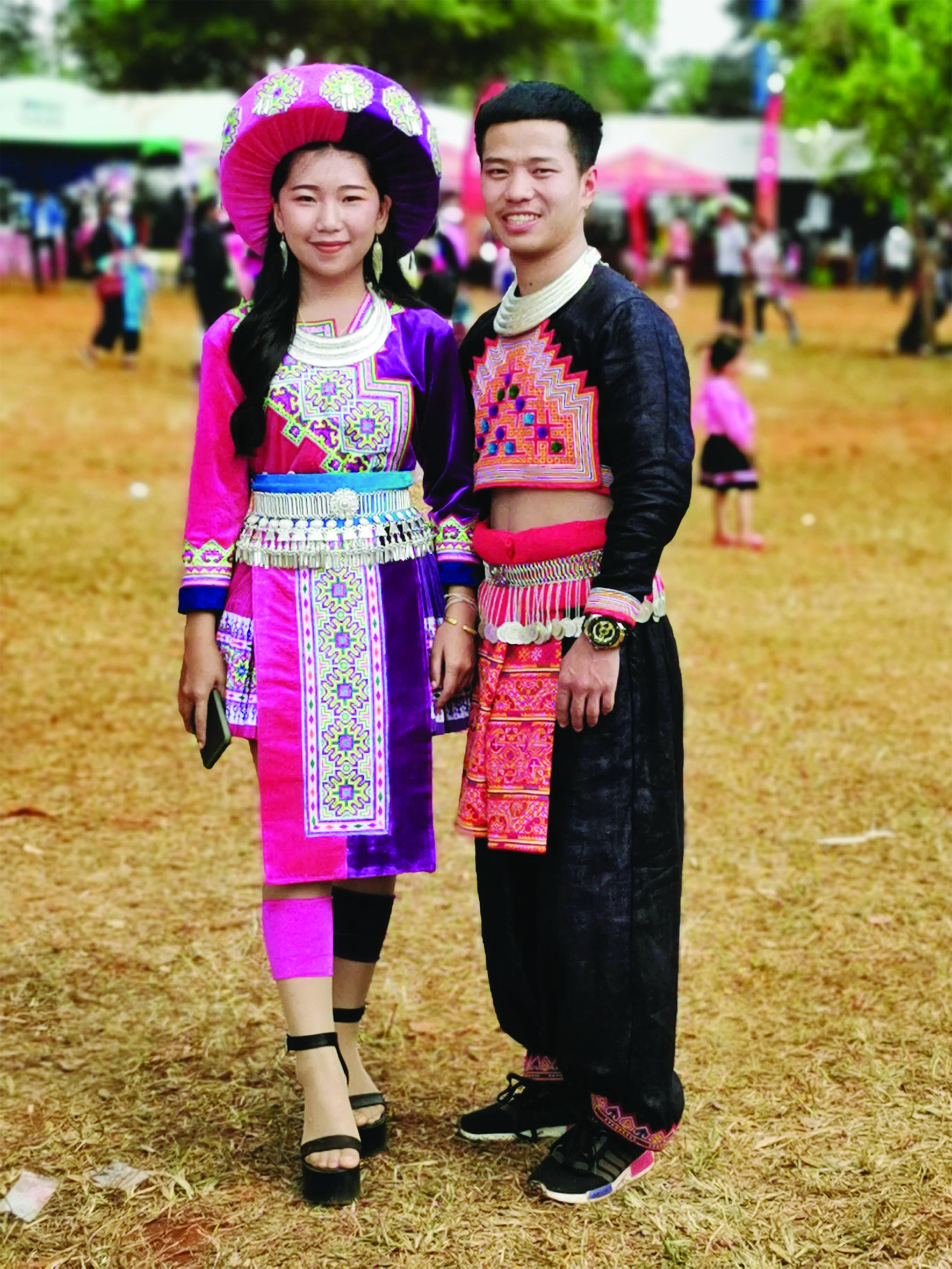
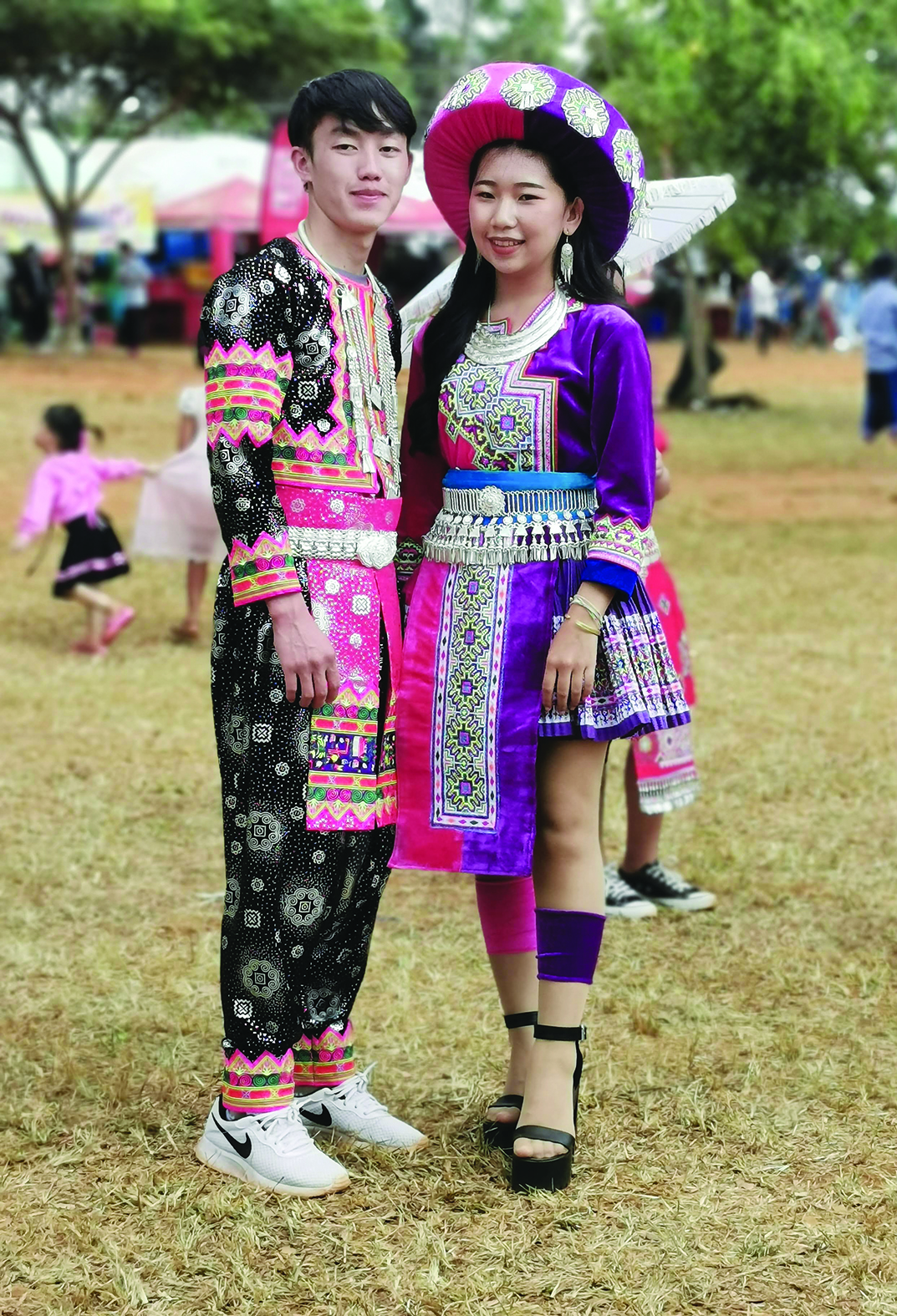
Other teenage girls opted for K-pop-inspired Hmong designs, complete with dyed hair, short skirts, and high-platform shoes. Not to be outdone, the boys also turned heads in their modern takes on traditional outfits, coordinating hues with silver ornaments and looking dapper in their trendy hairstyles and sunglasses. Young couples walking hand-in-hand and dressed in coordinating outfits featuring intricate Hmong embroidery and ornaments, too, made such an impression. The visual extravaganza made me feel like I was transported to a dream world, where Hmong royalty and nobility paraded in full regalia to celebrate their cultural heritage.
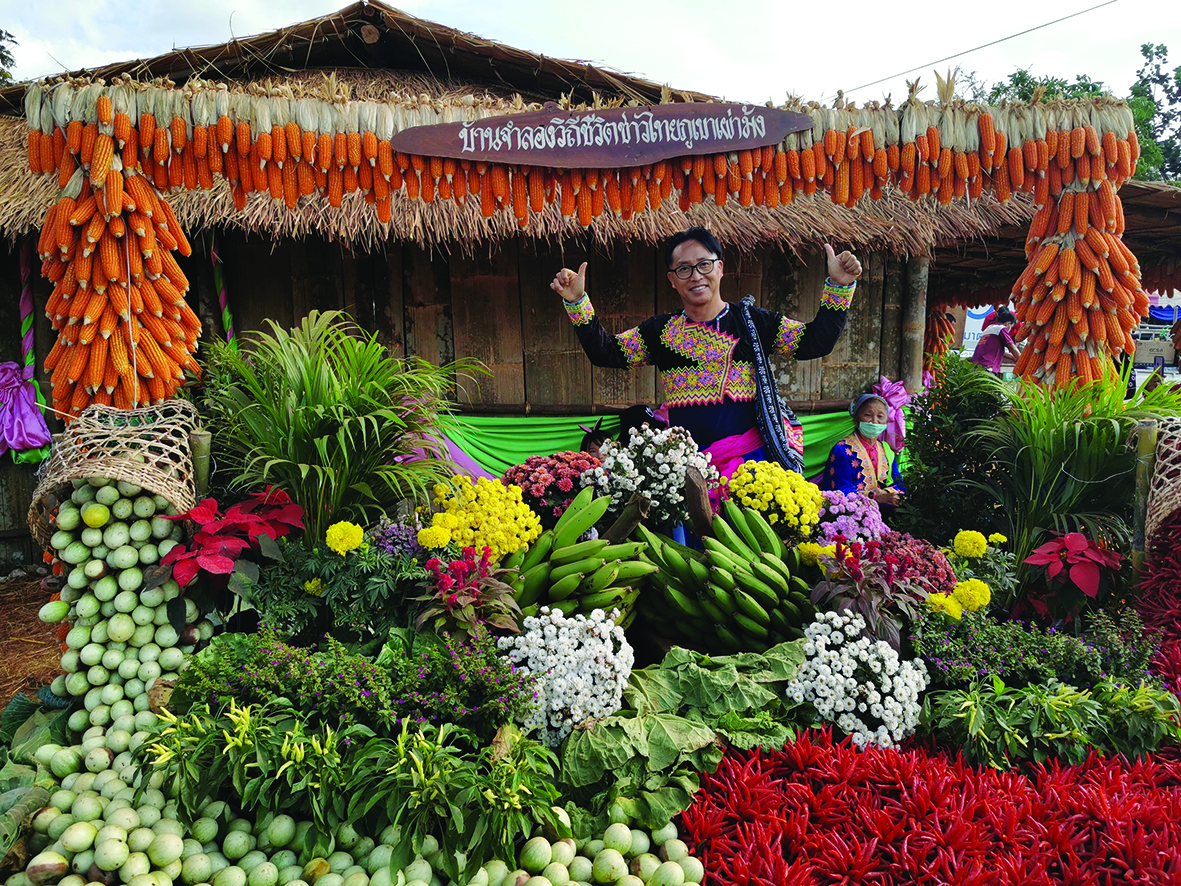
The Hmong are one of the largest groups out of Thailand’s six million hill tribe people, second to the Karen. While many Phop Phra Hmong are natives of the land, others arrived under the government’s forced resettlement programmes in the ‘60s and ‘70s during the Cold War. Since the mountainous region in northern Thailand where the Hmong lived was the stronghold of communist insurgents, the government relocated the Hmong to Tak in an effort to lessen support for the insurgents. “We were forced to leave our homes and communities and to start from scratch in a new place. Life was really hard,” recounted my friend. “We also received only a small plot of land to farm to till. Then the forest officials wanted to evict us because our farmlands happened to be in a national forest.” The Phop Phra Hmong face similar issues to other hill tribes, but they are much better off financially, thanks to their cash crops and business savviness. With access to education and jobs, the younger generations of Hmong are quickly assimilating into mainstream society. They even have one MP representing them in Parliament. Yet, despite adopting modern ways of life, the community remains tightly knit through their strong extended family system and unyielding cultural identity.
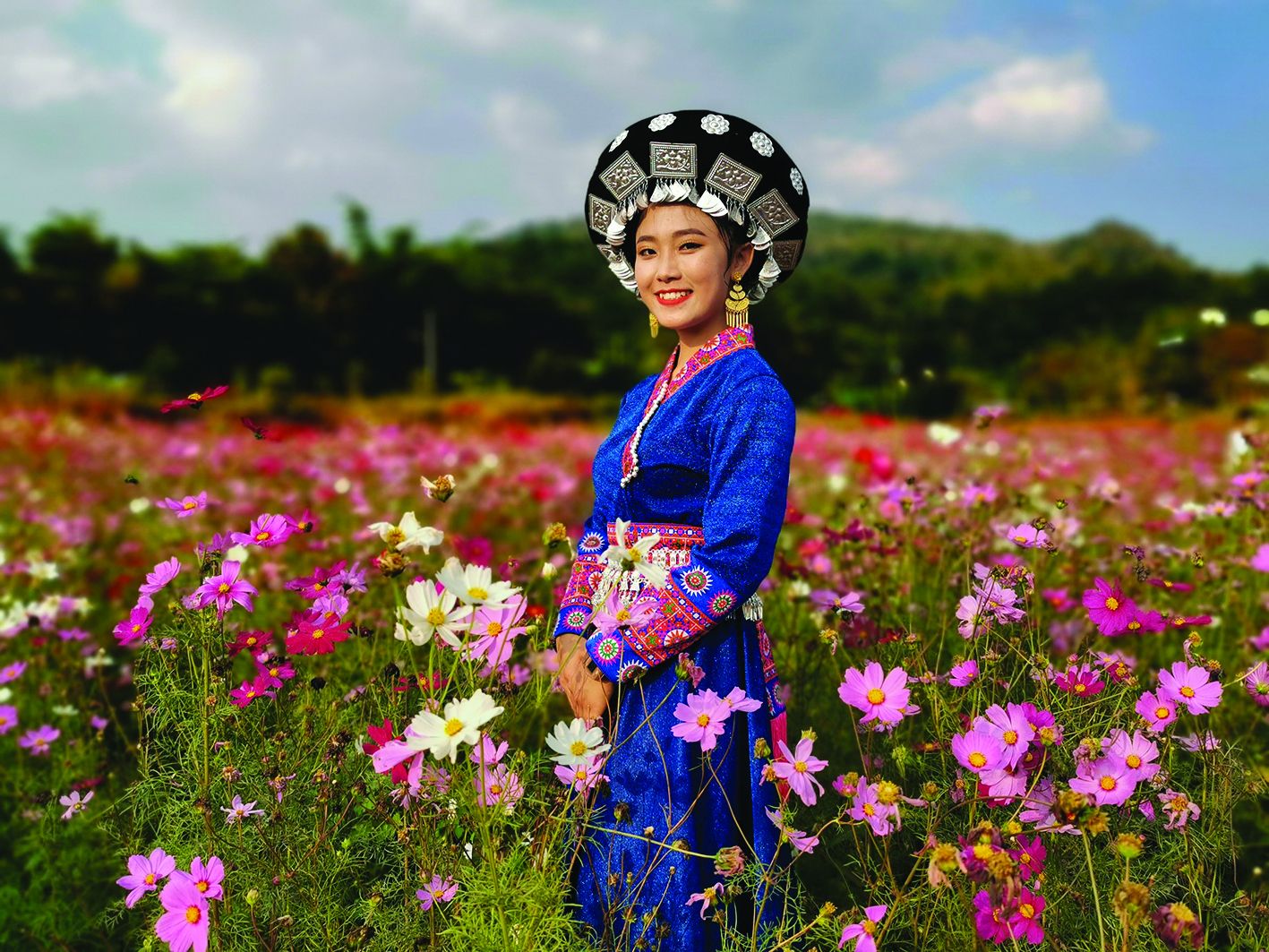
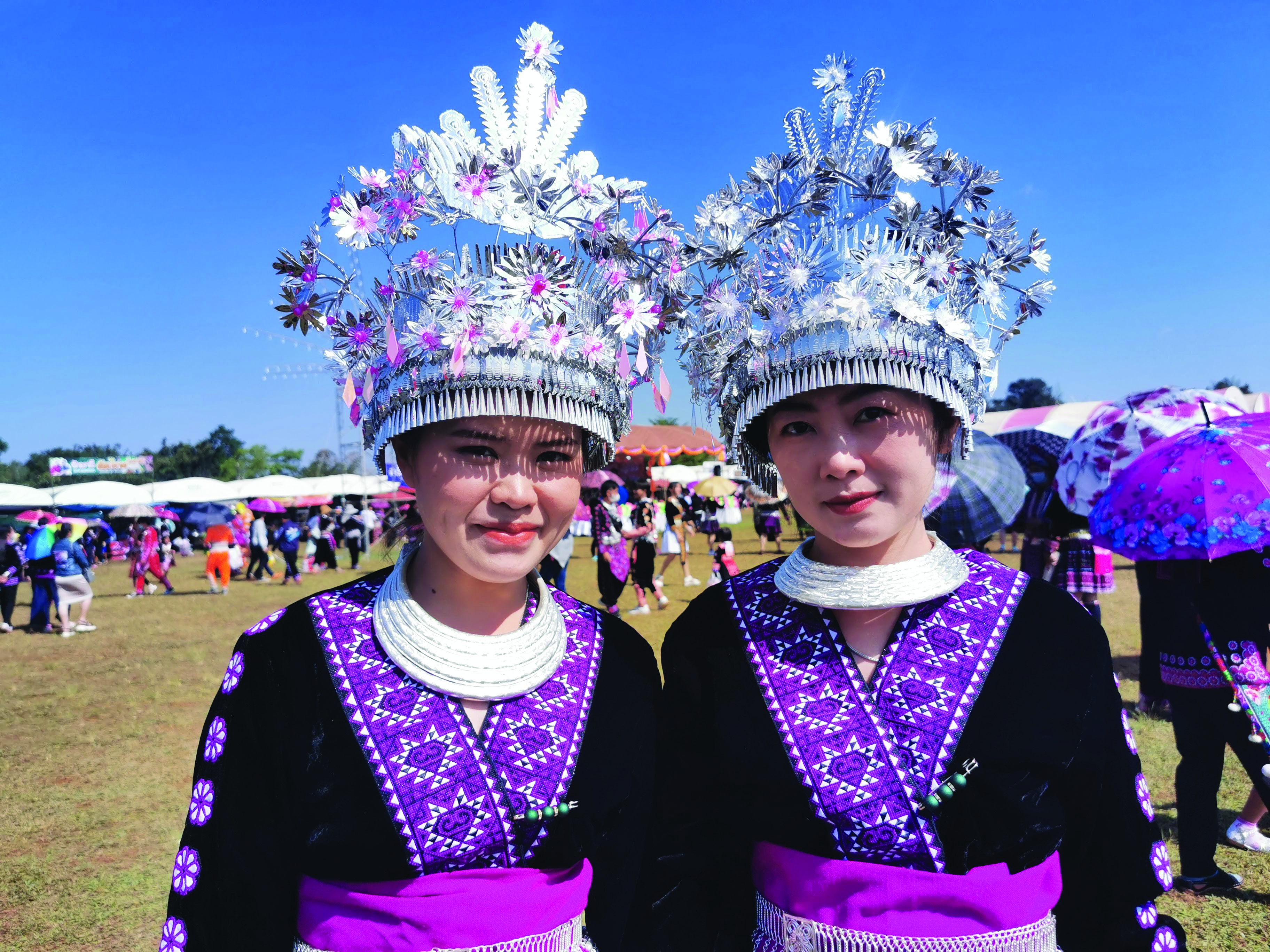
The Hmong New Year Festival is an embodiment of this fusion of old and new. While the kids are glued to the toy stores lining the festival grounds, their grandparents enjoyed the singing of traditional ballads that transported them back to their youth. Teenagers and young adults, armed with the latest models of cameras and cell phones, paraded the festival ground, directing photo shoots and taking selfies to share with friends on social media. In the centre of the field, a group of young women and men take turns tossing a small ball to their partners in a game of Yon Luk Chuang. A large crowd gathered in front of the stage to witness the Hmong beauty pageant where looks weren’t the only criteria for winning the crown, but also a deep understanding of Hmong heritage and customs. The cultural grandeur of the Phop Phra Hmong has not only increased their cultural confidence, but also brought them widespread fame and recognition. The festival has caught the interest of the provincial authorities, who have started promoting it as a New Year attraction in Tak. The decision to celebrate their cultural identity with such a spectacle is thus a wise one on the part of the Hmong, working to strengthen their youths’ pride in their cultural roots and proving an effective way to challenge ethnic prejudice, educate mainstream society, and make their voices heard. After the New Year festival, many revellers headed to nearby waterfalls and flower gardens to make the most out of the period of celebration. Phop Phra’s stunning natural beauty attracts visitors nationwide. “I hope people will come for more than just our sea of mist on the mountaintop, but our waterfalls and hot springs, too. I also wish for them to spend time to learn about our traditions and culture,” said my Hmong friend. The Hmong New Year Festival is more than just a visual extravaganza; it symbolises the people’s ability to combine tradition and modernity while remaining resilient. “Come back again next year,” invites my friend. We certainly will.
Get an exclusive peek into the world of Freen Sarocha: uncover 10 facts ...
In a cinematic landscape saturated with remakes, reboots and sequels, you might ...
These top 5 barber shops in Bangkok are where gentlemen can elevate ...
While traditional TV shows are serving us endless boy-meets-girl tales. Thailand has ...
Pets, as cherished members of our families, deserve rights and protections that ...
The internet makeup obsession straight out of Bangkok’s streets! Thai makeup zeroes ...
Wee use cookies to deliver your best experience on our website. By using our website, you consent to our cookies in accordance with our cookies policy and privacy policy